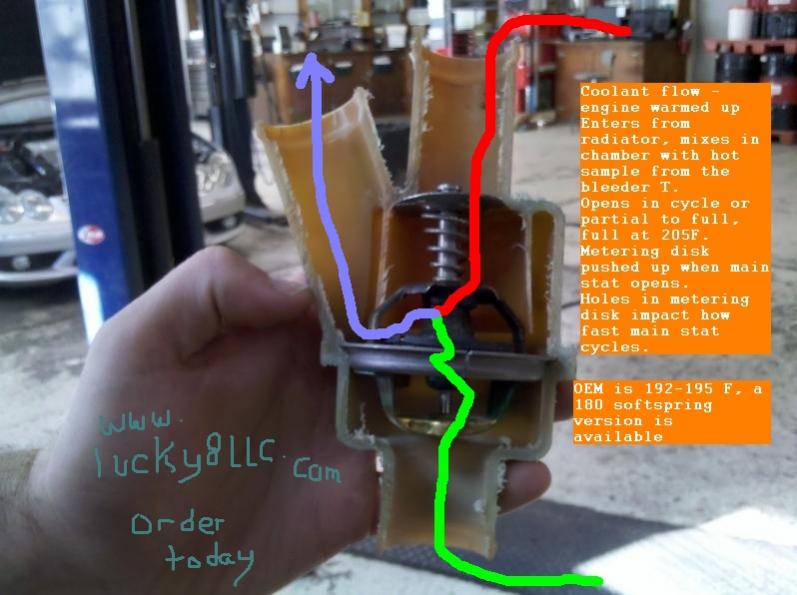A coolant system is vital for your vehicle’s engine. If coolant isn’t circulating, serious problems can occur.
In this blog post, we’ll explore why coolant circulation matters and what happens when it stops. Understanding these issues helps in spotting warning signs early. A malfunctioning coolant system can lead to engine overheating, which might cause severe damage. We’ll discuss common causes, symptoms, and solutions to ensure your vehicle runs smoothly.
Stay tuned to learn more about maintaining a healthy coolant system and avoiding costly repairs.
Causes Of Coolant Circulation Issues
Coolant circulation issues can lead to engine overheating. Understanding the causes can help you prevent bigger problems. Let’s explore the common reasons behind these issues.
Low Coolant Levels
Low coolant levels are a primary cause of circulation issues. Without enough coolant, the system can’t maintain the right temperature. This can cause the engine to overheat.
Check the coolant reservoir regularly. Ensure it’s filled to the recommended level. Here are some reasons for low coolant:
- Leaks: Look for wet spots under the car.
- Evaporation: Happens over time, especially in older cars.
- Faulty Radiator Cap: A bad cap can cause coolant loss.
Thermostat Problems
The thermostat regulates coolant flow. It opens and closes to control the engine’s temperature. If the thermostat malfunctions, it can lead to circulation problems.
Here are some common thermostat issues:
- Stuck Closed: Prevents coolant from circulating, causing overheating.
- Stuck Open: Allows too much coolant flow, leading to a cold engine.
- Faulty Sensor: Sends wrong temperature data, affecting the thermostat’s function.
| Issue | Impact on Coolant Circulation |
|---|---|
| Low Coolant Levels | Insufficient coolant causes overheating. |
| Thermostat Problems | Improper regulation of coolant flow. |

Credit: www.yourmechanic.com
Symptoms Of Poor Coolant Circulation
Coolant helps regulate your car’s engine temperature. Poor coolant circulation can lead to serious issues. Knowing the symptoms can help you take timely action. Here are some signs of poor coolant circulation in your vehicle.
Engine Overheating
One of the most common symptoms is engine overheating. When coolant isn’t circulating properly, the engine can’t cool down. This can cause the temperature to rise quickly.
Signs of engine overheating include:
- Steam coming from the hood
- A burning smell
- Engine warning light
Unusual Temperature Gauge Readings
Your vehicle’s temperature gauge is an important tool. It shows the engine’s temperature in real-time. If the coolant isn’t circulating well, the gauge will show abnormal readings.
Look for these signs:
- The needle moving to the red zone
- Frequent fluctuation of temperature
- Gauge stuck at a high temperature
| Symptom | Description |
|---|---|
| Engine Overheating | Temperature rises, steam, and burning smell |
| Unusual Gauge Readings | Temperature gauge shows abnormal readings |
Understanding these symptoms can help you address coolant issues. This will keep your engine running smoothly.
Checking Coolant Levels
One common issue with car cooling systems is the coolant not circulating properly. Checking coolant levels is a simple first step to diagnose this problem. Ensuring that your coolant levels are correct can prevent engine overheating and other serious issues.
Inspecting The Reservoir
Start by inspecting the coolant reservoir. This is usually a translucent plastic tank near the radiator. Look for the “Full” and “Low” markings on the side of the reservoir. If the coolant level is below the “Low” mark, you will need to add more coolant.
Make sure the engine is cool before opening the reservoir cap. This prevents burns from hot steam or coolant. Once open, visually check the coolant level against the markings.
Refilling Coolant
If the coolant level is low, it is time to refill the coolant. Use a funnel to pour the coolant into the reservoir up to the “Full” mark. Always use the type of coolant recommended by your car manufacturer.
After refilling, replace the reservoir cap securely. Start the engine and let it run for a few minutes. This helps to circulate the new coolant through the system. Check for leaks around the radiator and the reservoir.
| Step | Action |
|---|---|
| 1 | Inspect coolant reservoir for “Full” and “Low” markings. |
| 2 | Open reservoir cap when engine is cool. |
| 3 | Check coolant level against the markings. |
| 4 | Refill coolant to “Full” mark using a funnel. |
| 5 | Securely replace the reservoir cap. |
| 6 | Run engine for a few minutes to circulate coolant. |
| 7 | Check for leaks around radiator and reservoir. |

Credit: landroverforums.com
Examining The Thermostat
Examining the thermostat is essential if your car’s coolant is not circulating. The thermostat controls the flow of coolant through the engine. If it fails, your engine might overheat. This could lead to severe damage. Let’s dive into identifying and replacing a faulty thermostat.
Identifying A Faulty Thermostat
A faulty thermostat might show certain signs. One common sign is an overheating engine. Another sign is your heater blowing cold air. You might also notice fluctuating temperature readings. These signs suggest the thermostat is stuck closed. Feel the radiator hose after the engine warms up. If it remains cool, the thermostat might be faulty.
Replacing The Thermostat
Replacing the thermostat is a straightforward process. First, ensure the engine is cool. Locate the thermostat housing. It’s usually near the top radiator hose. Remove the housing bolts. Take out the old thermostat. Place the new thermostat in its position. Reattach the housing and tighten the bolts. Finally, refill the coolant. Start the engine and check for leaks. This should solve the circulation issue.
Assessing The Water Pump
The water pump is vital for your engine’s cooling system. It ensures coolant circulates through the engine. If the coolant isn’t circulating, the water pump might be faulty. Assessing the water pump can save your engine from overheating and damage. Let’s explore the signs of water pump failure and how to replace it.
Signs Of Water Pump Failure
A failing water pump shows several signs. Recognizing these early can prevent further damage. Here are some common signs:
- Overheating: The engine temperature rises quickly.
- Coolant Leak: You find coolant under your car.
- Whining Noise: A high-pitched sound comes from the front of the engine.
- Steam from Radiator: Steam coming from the radiator indicates overheating.
Overheating is the most obvious sign. Check the temperature gauge regularly. If it rises too fast, the water pump may be failing.
Coolant leaks are another clear sign. If you notice puddles under your car, inspect the color. Coolant is usually green, red, or orange. A leak means the pump is not sealing correctly.
A whining noise can indicate a loose belt or a failing bearing in the pump. Listen for unusual sounds when the engine runs. Steam from the radiator is a serious sign. It means the engine is overheating and can be damaged quickly.
Water Pump Replacement
Replacing a water pump requires some mechanical skills. If you’re comfortable with car repairs, follow these steps:
- Let the engine cool completely.
- Drain the coolant from the radiator.
- Remove the serpentine belt.
- Disconnect any hoses attached to the water pump.
- Unbolt and remove the old water pump.
- Clean the mounting surface.
- Install the new water pump and gasket.
- Reconnect hoses and belts.
- Refill the coolant and bleed the system.
Ensure all connections are tight. Refill the system with fresh coolant. Bleed the system to remove any air pockets.
If unsure, seek professional help. Incorrect installation can lead to more problems.
Regular maintenance and checks can keep your cooling system in good condition. Always refer to your car’s manual for specific instructions.
Inspecting Radiator And Hoses
When your vehicle’s coolant is not circulating properly, it often points to an issue within the radiator or the hoses. Inspecting these components can help identify and resolve the problem. This section will guide you through checking the radiator for blockages and examining the hoses for damage.
Radiator Blockages
The radiator is critical for cooling your engine. Blockages in the radiator can prevent coolant from flowing freely. To inspect for blockages:
- Ensure the engine is cold before starting.
- Remove the radiator cap.
- Look inside for any visible debris or sludge.
- Use a flashlight to check for internal blockages.
If you see debris, clean the radiator. You might need a professional for severe blockages. Regular maintenance can prevent blockages and keep your coolant circulating smoothly.
Damaged Hoses
Hoses are essential for transporting coolant between the engine and radiator. Damaged hoses can lead to leaks and poor circulation. Inspecting hoses involves:
- Visually examine all hoses for cracks or bulges.
- Press on the hoses to check for firmness. Soft spots indicate wear.
- Look for signs of coolant leaks around the hose connections.
- Check the hose clamps for tightness.
If you find any damage, replace the hose immediately. Worn hoses can burst and cause engine overheating. Keeping hoses in good condition ensures the coolant flows efficiently.
Flushing The Cooling System
When your car’s coolant is not circulating properly, it can lead to overheating and engine damage. One effective way to address this issue is by flushing the cooling system. This process helps remove dirt, debris, and old coolant that might be clogging the system, ensuring that your engine stays cool and performs efficiently.
When To Flush
Knowing when to flush the cooling system can save you from future problems. Here are some signs that indicate it’s time for a flush:
- Engine overheating frequently
- Coolant appears dirty or rusty
- Strange noises from the cooling system
- Temperature gauge reads higher than usual
Most manufacturers recommend a coolant flush every 30,000 miles or every two years, whichever comes first.
How To Flush The System
Flushing the cooling system is a straightforward process. Follow these simple steps:
- Drain the old coolant: Place a container under the radiator. Open the drain valve to let the old coolant flow out.
- Flush with water: Close the drain valve. Fill the radiator with distilled water. Start the engine and let it run for about 10 minutes.
- Drain again: Turn off the engine. Open the drain valve to remove the water.
- Add new coolant: Close the drain valve. Fill the radiator with a mix of new coolant and distilled water.
- Remove air pockets: Start the engine. Let it run with the radiator cap off to release any trapped air.
Make sure to dispose of the old coolant properly, as it is toxic and harmful to the environment.
Preventive Maintenance Tips
Keeping your car’s coolant system in top shape is crucial. Regular maintenance prevents overheating and costly repairs. Here are some essential tips to ensure your coolant system works efficiently.
Regular System Inspections
Inspect your coolant system regularly. Look for leaks, corrosion, or any unusual signs. A simple visual check can save you from major issues. Check the coolant level in the reservoir. Make sure it’s within the recommended range. A drop in level might indicate a leak.
Ensure the radiator cap is secure and in good condition. A faulty cap can cause pressure loss and overheating. Inspect the hoses for cracks or wear. Replace any damaged hoses immediately. Also, check the water pump for leaks or unusual noises.
Using The Right Coolant
Always use the correct coolant for your vehicle. Refer to your car’s manual for the recommended type. Using the wrong coolant can cause damage and reduce the efficiency of the cooling system.
Mix the coolant with the right proportion of water. Typically, a 50/50 mix of coolant and water works well. Check the coolant’s freeze and boil points. Adjust the mixture if necessary.
Avoid mixing different types of coolants. This can lead to chemical reactions and damage your system. Use a clean funnel to pour the coolant. Contaminants can clog the system and cause blockages.

Credit: www.reddit.com
Frequently Asked Questions
Why Is My Car’s Coolant Not Circulating?
The coolant pump might be faulty. Check for blockages or thermostat issues.
What Happens If Coolant Is Not Circulating?
The engine can overheat. This may cause serious damage over time.
How Can I Tell If My Coolant Is Not Circulating?
Look for signs like overheating or a rising temperature gauge.
Can Low Coolant Cause Circulation Problems?
Yes, low coolant levels can prevent proper circulation. Check and refill if needed.
What Should I Do If My Coolant Isn’t Circulating?
Visit a mechanic. They can diagnose and fix the issue quickly.
Conclusion
To sum up, a coolant not circulating can cause engine overheating. Address the issue promptly. Check for clogs, leaks, or faulty parts. Regular maintenance helps prevent these problems. Ensure your coolant system works efficiently. Keeping your car’s cooling system in good condition is key.
Safe driving depends on a healthy engine. Don’t ignore warning signs. Quick action saves time and money. Stay proactive with car care. Your vehicle will thank you.

















